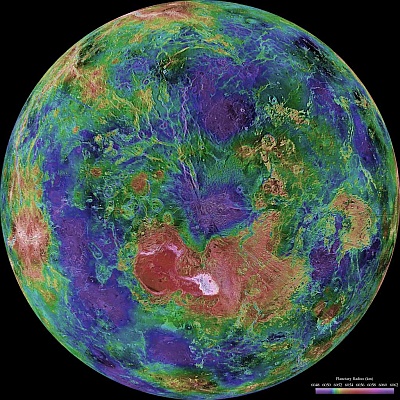 |
Maxwell Montes - Venus's highest mountain | Maxwell Legacy Concepts |
|---|
In a nutshell |
No-one has seen Maxwell Montes even through a telescope because Venus is totally shrouded in clouds - very thick clouds at that. Venus has an astonishly deep atmosphere. At ground level it is denser than a typical caravan so a similar structure filled with breathable air at Earth's atmospheric pressure untethered would float upwards like a balloon. Looking in at Venus, the clouds start at about 60 km above the surface in a layer about 20 km thick. Below that is lightning and an orange haze created by the residual light filtering through the clouds. These clouds have little water in them and are mainly sulphuric acid droplets. There is absolutely no water on the surface, which is mainly over 400° C. Maxwell Montes would be truly a hellish place to be. Maxwell Montes was named in 1967 after James Clerk Maxwell, for it was discovered using Earth-based radar imaging. The tribute is to Maxwell's discovery of electromagnetic waves. Since then, most of Venus has been mapped in considerable detail by the Magellan probe orbiting Venus, using radar to penetrate the thick cloud layer. Venusian features have all been named after women, leaving Maxwell Montes, the highest point on Venus, a notable exception. It rises about the height of Mount Everest above the surrounding plain. The image on the right is a view looking down on Venus's N. pole. The colour coding is mainly height, with blue representing the lowlands and red plateaus. Maxwell Montes is the white area below centre, rising out of a plateau, the colour indicating it is particularly effective at reflecting radar waves back to the orbiting detector. The white is not snow (there being no surface water) but is speculated to be a metallic deposit whose composition is not yet known. JSR 2016 |
 |
|---|
|
|---|